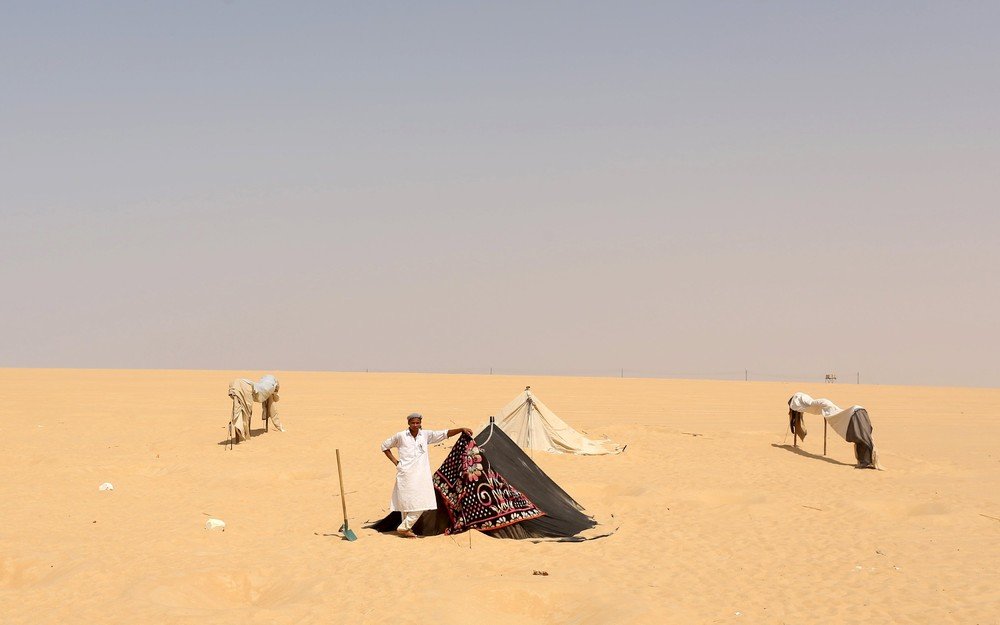Ancient Healing: The Siwi Tradition of Sand Bathing
Siwa Oasis is one of those places that hold a very special kind of power, a very special kind of magic. The Amazighis knew this when they settled here many hundreds of years ago, so did Alexander the Great, and so does anyone who visits the secluded oasis today. Siwa’s gifts extend from its stunning natural heritage, to a history and culture as rich and complex as its people. Visitors flock here for many different reasons, but one of the most fascinating is the healing tradition of hot sand baths.
It is said that the practice dates back to the ancient Egyptians and Greeks, but it’s the nomadic tribes of North Africa who have been using the unique form of therapy for hundreds, if not thousands, of years; it’s more than likely it was them who first introduced it. From the deserts of Morocco to the sands of Siwa, the ritual of burying people in the hot desert sand is believed to help treat chronic pain disorders like rheumatism and neuromuscular diseases, as well as a host of other ailments, including infertility.
In the middle of the scorching summer, when temperatures can easily reach a blistering 45 degrees, experienced Siwis take patients to a designated spot in the desert, usually Gebel Dakrour, and begin preparing special pits for the burials. Patients are asked to take off their clothes and are buried in the sand from the neck down for around 10 to 15 minutes, and all this happens in the middle of the day when temperatures are at their highest! The sand is unbearably hot at first, but within no time, the body adapts and patients reportedly feel a sense of comfort once they begin to sweat. A small shade is set up to protect the face though, and they are given small sips of water to keep hydrated, so patients are not without some form of relief.
After the sand bath, the person is wrapped in a heavy blanket to keep the body as warm as possible, and taken into a special tent nearby, one that has been exposed to the hot son until it becomes similar to a sauna. Here they’re usually served a warm herbal drink and are welcome to stay in the tent as long as they wish, but the idea is to keep them sweating for as long as possible.
Once the day’s treatment is done, patients are then taken to a nearby house to cool down and change, but they are not allowed to shower just yet. They end their day with a healthy dinner and rest before repeating the process the next day, making sure to keep warm throughout; at no point should their body temperature go down below a certain point. The entire process takes anywhere from three to nine days, and patients are not allowed to shower at all until the treatment is fully complete.
There are many who swear by the treatment, claiming it has helped ease their pain when nothing else would. It’s believed to help treat and sometimes even cure skin diseases, inflammation and even impotence, although there is very little scientific evidence to back this up. And it is certainly not for everyone; people with heart conditions or high blood pressure are strongly advised against it.
The skills and knowledge required to carry out the treatment, like so many traditional practices, are passed down from one generation to the next. It’s an age-old ritual that still brings visitors from far and wide to the historic oasis, not just for the therapy itself, but for the almost unparalleled serenity and peace one can find there.
Siwa has so much to offer for anyone who does make the trip out there, from the architecture of the ancient Shali, an incredible structure in the heart of the oasis, to the vast groves of palm and olive trees, to the fantastically rich cultural heritage of the Amazighi people who live there. Siwa also has some of the country’s most stunning eco-lodges - Adrere Amellal and Taziry are two that are worth a mention - all inspired by the traditional architecture of the oasis. Whether you’re going for some much needed healing therapy or just to enjoy the scenery and history, Siwa deserves a spot on anyone’s bucket list.



